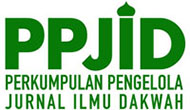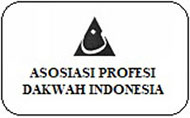NILAI-NILAI ISLAM DALAM DRAMA KOREA PERSPEKTIF ANAK MUDA MUSLIM PEKANBARU
Abstract
This article describes one of the effects of globalization on young Muslims in Indonesia. This article argues that the emergence of globalization has provided opportunities for young Muslims to take 'Islamic' values from the non-Arab world, not solely from the center of Islam (Muslim Arab countries). The purpose of this study is to find out how Pekanbaru Muslim Youth take Islamic values contained in Korean drama. This research uses ethnographic methods, by identifying informants namely young Muslim Muslims who are pious from Islamic educational backgrounds and like Korean television dramas. They have a good understanding of Islam so that in daily life they used to do the obligatory prayers five times a day and fasting is obligatory in the holy month of Ramadan. Even some of them do the teachings of Islam that are sunnah such as reading the Qur'an, sunnah prayers in congregation in the mosque and others. This article found that Korean television dramas encourage Muslim young people to negotiate Islamic values displayed in Korean television dramas. The results of this study reveal some Islamic values such as aspects of hard work, and never give up are often portrayed in television dramas.
Keywords
Full Text:
PDFReferences
Ang, Ien. (2006). Living Room Wars: Rethinking Media Audience for a Post-Modern World. London: Routledge.
Appadurai, Arjun. (1998). Modernity at Large: Cultural Dimensions of Globalization, Minneapolis: University of Minnesota Press.
At-Taubah—Qur’an Kemenag. (2020). http://quran.kemenag.go.id/index.php/sura/9
Barker, Chris. (2000). Cultural Studies: Theory and Practice. London: SAGE Publications.
Cho Hae-Joang. (2005). “Reading the Korean Wave as a Sign of Global Shift” in Korea Journal, Winter: 150
Chua Beng Huat. (2015). “Korean Pop Culture: Emergent Genre of East Asian Pop Culture?” in The Korean Wave in Southeast Asia: Consumption and Cultural Production, ed. Mary J. Ainslie and Joanne B.Y. Lim. Petaling Jaya: SIRD.
Chua Beng Huat. (2008).“Structure of Identification and Distancing in Watching East Asian Television Drama” in East Asian TV Dramas: Analysing the Korean Wave, ed. Chua Beng Huat and Koichi Iwabuchi, Hong Kong: Hong Kong University Press
Chua Beng Huat. (2003). Life is Not Complete Without Shopping: Consumption Culture in Singapore. Singapore: Singapore University Press, 2003.
Dolby, Nadine and Greg Dimitriadis, eds., (2004). Learning to Labor in New Times. London: Routledge.
Do Kyun Kim et al., “Television Drama, Narrative Engagement and Audience Buying Behavior: The Effects of Winter Sonata in Japan,” The International Communication Gazette 71, no. 7 (2009): 578.
Fontana, Andrea. (2004). “Ethnographic Trends in the Postmodern Era,” in Postmodernism and Social Inquiry, ed. David R. Dickens and Andrea Fontana. London: University College London, 2004
Friedman, Jonathan. (1994). “Globalization and Localization,” in Cultural Identity and Global Process. London: SAGE Publications.
Hall, Stuart, Paddy Whannel. (1998). “The Young Audience,” in Cultural Theory and Popular Culture: A Reader, ed. John Storey, London: Prentice-Hall.
Hobson, Dorothy. (2005). “Everything Stops for Crossroads,” in Media Studies: A Reader, ed. Paul Marris and Sue Thornham. Edinburgh: Edinburgh University Press.
Ida, Rahmah. (2008). “ Consuming Taiwanese Boys Culture: Watching Meteor Garden with Urban Kampung Women”, in Popular Culture in Indonesia: Fluid Identities in Post-Authoritarian politics, ed. Ariel Heryanto, London: Routledge.
Qialoei Jiang and Louis Leung, “Lifestyles, Gratification Sought, and Narrative Appeal: American and Korean TV Drama Viewing Among Internet Users in Urban China,” The International Communication Gazette 74, no. 2 (2012): 161.
J. Goodman, Douglas, Mirelle Cohen. (2004). Consumer Culture: A Reference Handbook. California: ABC-CLIO. Inc.
Jonghoe Yang, ”The Korean Wave (Hallyu) in East Asia: A Comparison of Chinese, Japanese, and Taiwanese Audiences Who Watch Korean TV Dramas,” Development and Society 41, no. 1 (2012): 110-11.
Milestone, Katie, Anneke Meyer. (2012). Gender and Popular Culture. New York: Polity Press, 2012.
Storey, John. (2003). Cultural Studies and the Study of Popular Culture. Edinburgh: Edinburgh University Press.
Sang-Yeon Sung. (2010).“Constructing a New Image: A Hallyu in Taiwan”, in European Journal of East Asian Studies 9.1 (2010): 25-45
Taufik Ikram Jamil, Membangun Ingatan; Sebuah Abstraksi, Paper presented on Seminar Nasional Bahasa Indonesia in Pekanbaru 21-23 December 2010
Tomlinson, John. (2001). Cultural Imperialism. London: Continuum.
Tuhiwai Smith, Linda. (1999). Decolonizing Methodologies: Research and Indigenous Peoples (London: Zed Books Ltd.
Willis, Paul (1998) “Symbolic Creativity,” in Cultural Theory and Popular Culture: A Reader, ed. John Storey. London: Prentice-Hall.
Zawawi Ibrahim and Noorshah M.S., (2012) “Memperkenalkan Naratif Keterpinggiran dan Jatidiri Penan: Satu Wacana Postmodernis,” in Masyarakat Penan dan Impian Pembangunan: Satu Himpunan Naratif Keterpinggiran dan Jatidiri, ed. Zawawi Ibrahim and Noorshah M.S. Petaling Jaya: SIRD.
Zawawi Ibrahim. (2009).“The ‘other’ Education: Exploring Agency and Youth Culture in Malaysia” (presentation at Redesigning Pedagogy International Conference, Panel: Popular Culture and Education in Asia National Institute of Education, Nanyang Technological University, Singapore, 1-3 June).
DOI: http://dx.doi.org/10.24014/jdr.v30i2.8492
Refbacks
- There are currently no refbacks.

This work is licensed under a Creative Commons Attribution-ShareAlike 4.0 International License.
Editorial Office:
2nd Floor, Building of Faculty of Da'wah and Communication, Universitas Islam Negeri Sultan Syarif Kasim Riau. Jl. HR Soebrantas Km 15, Simpangbaru, Tampan, Pekanbaru
Email : jurnalrisalah@uin-suska.ac.id

This work is licensed under a Creative Commons Attribution-ShareAlike 4.0 International License.














